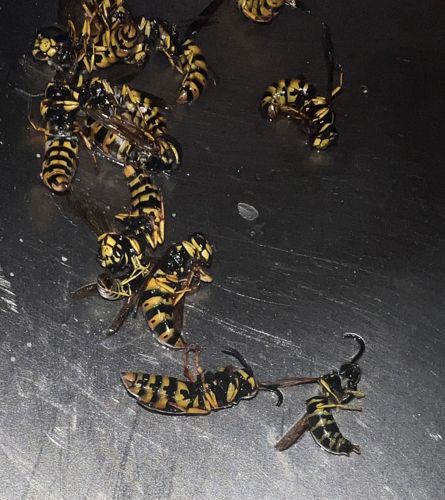Yellowjacket
Scientific Name: Vespula spp. or Dolichovespula spp.
Order & Family: Hymenoptera, Vespidae
Size: Workers typically range from 10-15 mm (0.4-0.6 inches) in length, while queens can be slightly larger, up to 20 mm (0.8 inches).

Natural Habitat
Yellowjackets are generally found in various habitats, including forests, grasslands, urban, and suburban areas. They often build nests underground, in hollow trees, wall voids, or dense bushes.
Diet & Feeding
Yellowjackets are opportunistic feeders. Adults primarily feed on sugars (nectar, fruit juices, sap, honeydew, and sugary human foods). Larvae are fed protein, usually in the form of chewed-up insects (caterpillars, flies, spiders) and carrion collected by foraging workers.
Behavior Patterns
Yellowjackets are social insects living in colonies with a queen, workers, and drones. They are known for their aggressive defensive behavior when their nest is disturbed. Unlike bees, yellowjackets can sting multiple times because their stingers are not barbed. They are most active during late summer and early fall as the colony size peaks and food sources become scarcer.
Risks & Benefits
Risks: Yellowjackets are considered pests due to their aggressive stinging behavior, particularly when their nests are threatened or when foraging near human food. Their stings are painful and can cause allergic reactions in sensitive individuals, potentially leading to anaphylaxis. Benefits: They serve as important predators of other, often pest, insects (like caterpillars and flies) during their larval rearing phase, thus contributing to natural pest control. They can also act as pollinators to a minor extent while feeding on nectar and plant sap.
Identified on: 10/14/2025